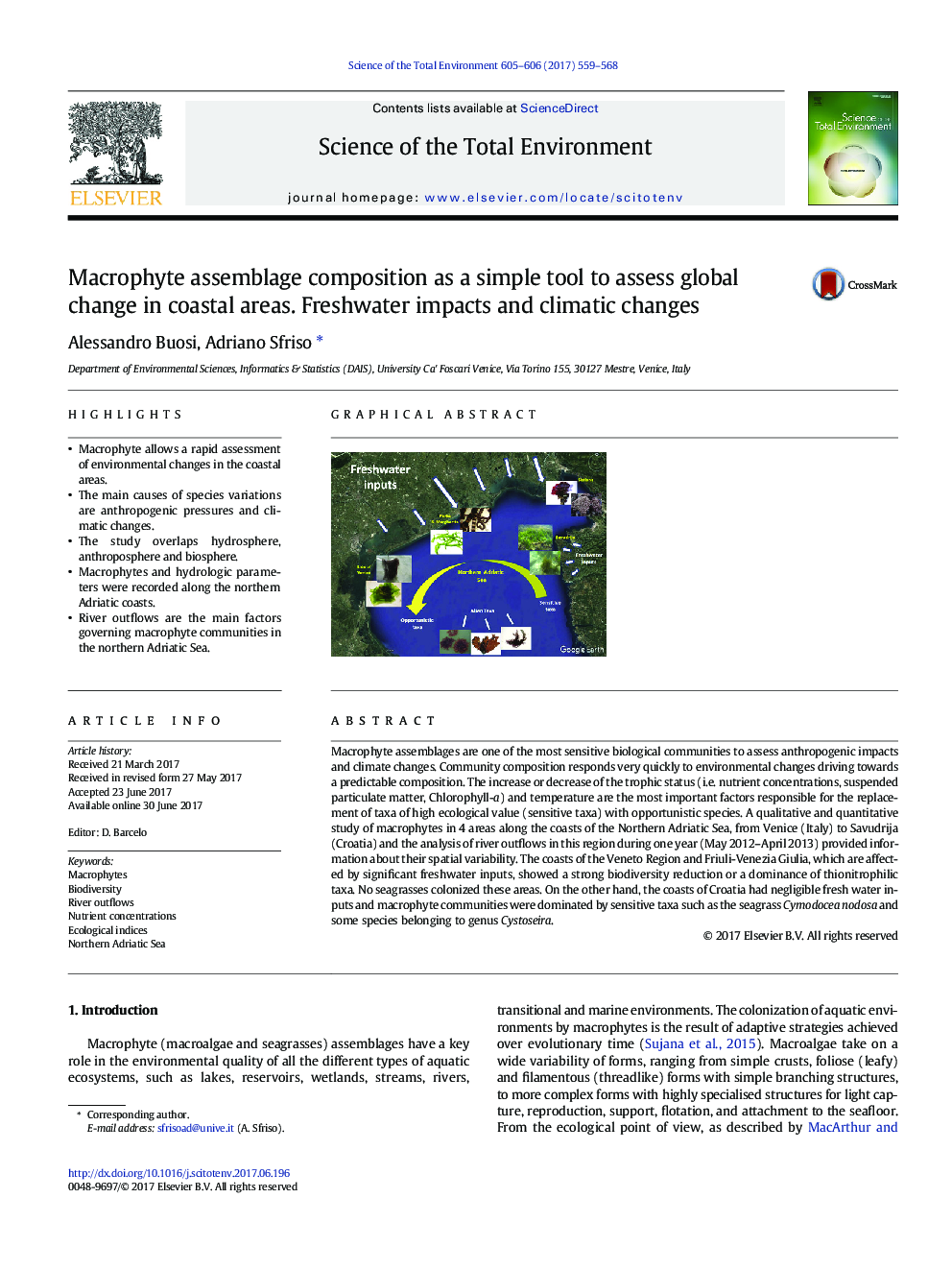| Article ID | Journal | Published Year | Pages | File Type |
|---|---|---|---|---|
| 5750623 | Science of The Total Environment | 2017 | 10 Pages |
â¢Macrophyte allows a rapid assessment of environmental changes in the coastal areas.â¢The main causes of species variations are anthropogenic pressures and climatic changes.â¢The study overlaps hydrosphere, anthroposphere and biosphere.â¢Macrophytes and hydrologic parameters were recorded along the northern Adriatic coasts.â¢River outflows are the main factors governing macrophyte communities in the northern Adriatic Sea.
Macrophyte assemblages are one of the most sensitive biological communities to assess anthropogenic impacts and climate changes. Community composition responds very quickly to environmental changes driving towards a predictable composition. The increase or decrease of the trophic status (i.e. nutrient concentrations, suspended particulate matter, Chlorophyll-a) and temperature are the most important factors responsible for the replacement of taxa of high ecological value (sensitive taxa) with opportunistic species. A qualitative and quantitative study of macrophytes in 4 areas along the coasts of the Northern Adriatic Sea, from Venice (Italy) to Savudrija (Croatia) and the analysis of river outflows in this region during one year (May 2012-April 2013) provided information about their spatial variability. The coasts of the Veneto Region and Friuli-Venezia Giulia, which are affected by significant freshwater inputs, showed a strong biodiversity reduction or a dominance of thionitrophilic taxa. No seagrasses colonized these areas. On the other hand, the coasts of Croatia had negligible fresh water inputs and macrophyte communities were dominated by sensitive taxa such as the seagrass Cymodocea nodosa and some species belonging to genus Cystoseira.
Graphical abstractDownload high-res image (334KB)Download full-size image
